RBS 2012 Annual Report Download - page 371
Download and view the complete annual report
Please find page 371 of the 2012 RBS annual report below. You can navigate through the pages in the report by either clicking on the pages listed below, or by using the keyword search tool below to find specific information within the annual report.-
 1
1 -
 2
2 -
 3
3 -
 4
4 -
 5
5 -
 6
6 -
 7
7 -
 8
8 -
 9
9 -
 10
10 -
 11
11 -
 12
12 -
 13
13 -
 14
14 -
 15
15 -
 16
16 -
 17
17 -
 18
18 -
 19
19 -
 20
20 -
 21
21 -
 22
22 -
 23
23 -
 24
24 -
 25
25 -
 26
26 -
 27
27 -
 28
28 -
 29
29 -
 30
30 -
 31
31 -
 32
32 -
 33
33 -
 34
34 -
 35
35 -
 36
36 -
 37
37 -
 38
38 -
 39
39 -
 40
40 -
 41
41 -
 42
42 -
 43
43 -
 44
44 -
 45
45 -
 46
46 -
 47
47 -
 48
48 -
 49
49 -
 50
50 -
 51
51 -
 52
52 -
 53
53 -
 54
54 -
 55
55 -
 56
56 -
 57
57 -
 58
58 -
 59
59 -
 60
60 -
 61
61 -
 62
62 -
 63
63 -
 64
64 -
 65
65 -
 66
66 -
 67
67 -
 68
68 -
 69
69 -
 70
70 -
 71
71 -
 72
72 -
 73
73 -
 74
74 -
 75
75 -
 76
76 -
 77
77 -
 78
78 -
 79
79 -
 80
80 -
 81
81 -
 82
82 -
 83
83 -
 84
84 -
 85
85 -
 86
86 -
 87
87 -
 88
88 -
 89
89 -
 90
90 -
 91
91 -
 92
92 -
 93
93 -
 94
94 -
 95
95 -
 96
96 -
 97
97 -
 98
98 -
 99
99 -
 100
100 -
 101
101 -
 102
102 -
 103
103 -
 104
104 -
 105
105 -
 106
106 -
 107
107 -
 108
108 -
 109
109 -
 110
110 -
 111
111 -
 112
112 -
 113
113 -
 114
114 -
 115
115 -
 116
116 -
 117
117 -
 118
118 -
 119
119 -
 120
120 -
 121
121 -
 122
122 -
 123
123 -
 124
124 -
 125
125 -
 126
126 -
 127
127 -
 128
128 -
 129
129 -
 130
130 -
 131
131 -
 132
132 -
 133
133 -
 134
134 -
 135
135 -
 136
136 -
 137
137 -
 138
138 -
 139
139 -
 140
140 -
 141
141 -
 142
142 -
 143
143 -
 144
144 -
 145
145 -
 146
146 -
 147
147 -
 148
148 -
 149
149 -
 150
150 -
 151
151 -
 152
152 -
 153
153 -
 154
154 -
 155
155 -
 156
156 -
 157
157 -
 158
158 -
 159
159 -
 160
160 -
 161
161 -
 162
162 -
 163
163 -
 164
164 -
 165
165 -
 166
166 -
 167
167 -
 168
168 -
 169
169 -
 170
170 -
 171
171 -
 172
172 -
 173
173 -
 174
174 -
 175
175 -
 176
176 -
 177
177 -
 178
178 -
 179
179 -
 180
180 -
 181
181 -
 182
182 -
 183
183 -
 184
184 -
 185
185 -
 186
186 -
 187
187 -
 188
188 -
 189
189 -
 190
190 -
 191
191 -
 192
192 -
 193
193 -
 194
194 -
 195
195 -
 196
196 -
 197
197 -
 198
198 -
 199
199 -
 200
200 -
 201
201 -
 202
202 -
 203
203 -
 204
204 -
 205
205 -
 206
206 -
 207
207 -
 208
208 -
 209
209 -
 210
210 -
 211
211 -
 212
212 -
 213
213 -
 214
214 -
 215
215 -
 216
216 -
 217
217 -
 218
218 -
 219
219 -
 220
220 -
 221
221 -
 222
222 -
 223
223 -
 224
224 -
 225
225 -
 226
226 -
 227
227 -
 228
228 -
 229
229 -
 230
230 -
 231
231 -
 232
232 -
 233
233 -
 234
234 -
 235
235 -
 236
236 -
 237
237 -
 238
238 -
 239
239 -
 240
240 -
 241
241 -
 242
242 -
 243
243 -
 244
244 -
 245
245 -
 246
246 -
 247
247 -
 248
248 -
 249
249 -
 250
250 -
 251
251 -
 252
252 -
 253
253 -
 254
254 -
 255
255 -
 256
256 -
 257
257 -
 258
258 -
 259
259 -
 260
260 -
 261
261 -
 262
262 -
 263
263 -
 264
264 -
 265
265 -
 266
266 -
 267
267 -
 268
268 -
 269
269 -
 270
270 -
 271
271 -
 272
272 -
 273
273 -
 274
274 -
 275
275 -
 276
276 -
 277
277 -
 278
278 -
 279
279 -
 280
280 -
 281
281 -
 282
282 -
 283
283 -
 284
284 -
 285
285 -
 286
286 -
 287
287 -
 288
288 -
 289
289 -
 290
290 -
 291
291 -
 292
292 -
 293
293 -
 294
294 -
 295
295 -
 296
296 -
 297
297 -
 298
298 -
 299
299 -
 300
300 -
 301
301 -
 302
302 -
 303
303 -
 304
304 -
 305
305 -
 306
306 -
 307
307 -
 308
308 -
 309
309 -
 310
310 -
 311
311 -
 312
312 -
 313
313 -
 314
314 -
 315
315 -
 316
316 -
 317
317 -
 318
318 -
 319
319 -
 320
320 -
 321
321 -
 322
322 -
 323
323 -
 324
324 -
 325
325 -
 326
326 -
 327
327 -
 328
328 -
 329
329 -
 330
330 -
 331
331 -
 332
332 -
 333
333 -
 334
334 -
 335
335 -
 336
336 -
 337
337 -
 338
338 -
 339
339 -
 340
340 -
 341
341 -
 342
342 -
 343
343 -
 344
344 -
 345
345 -
 346
346 -
 347
347 -
 348
348 -
 349
349 -
 350
350 -
 351
351 -
 352
352 -
 353
353 -
 354
354 -
 355
355 -
 356
356 -
 357
357 -
 358
358 -
 359
359 -
 360
360 -
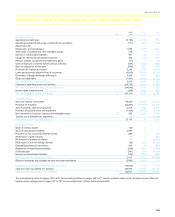 361
361 -
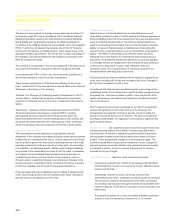 362
362 -
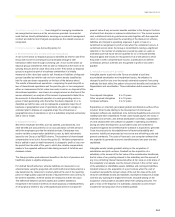 363
363 -
 364
364 -
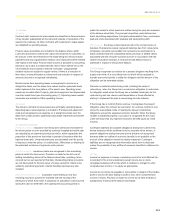 365
365 -
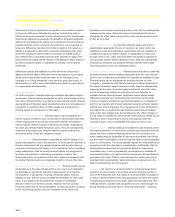 366
366 -
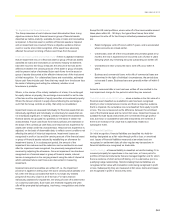 367
367 -
 368
368 -
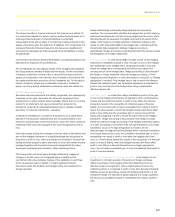 369
369 -
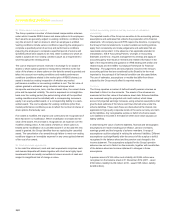 370
370 -
 371
371 -
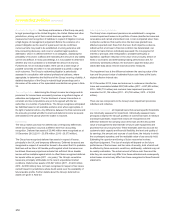 372
372 -
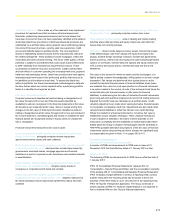 373
373 -
 374
374 -
 375
375 -
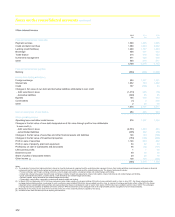 376
376 -
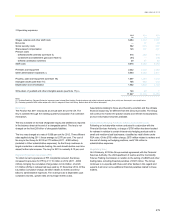 377
377 -
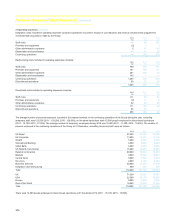 378
378 -
 379
379 -
 380
380 -
 381
381 -
 382
382 -
 383
383 -
 384
384 -
 385
385 -
 386
386 -
 387
387 -
 388
388 -
 389
389 -
 390
390 -
 391
391 -
 392
392 -
 393
393 -
 394
394 -
 395
395 -
 396
396 -
 397
397 -
 398
398 -
 399
399 -
 400
400 -
 401
401 -
 402
402 -
 403
403 -
 404
404 -
 405
405 -
 406
406 -
 407
407 -
 408
408 -
 409
409 -
 410
410 -
 411
411 -
 412
412 -
 413
413 -
 414
414 -
 415
415 -
 416
416 -
 417
417 -
 418
418 -
 419
419 -
 420
420 -
 421
421 -
 422
422 -
 423
423 -
 424
424 -
 425
425 -
 426
426 -
 427
427 -
 428
428 -
 429
429 -
 430
430 -
 431
431 -
 432
432 -
 433
433 -
 434
434 -
 435
435 -
 436
436 -
 437
437 -
 438
438 -
 439
439 -
 440
440 -
 441
441 -
 442
442 -
 443
443 -
 444
444 -
 445
445 -
 446
446 -
 447
447 -
 448
448 -
 449
449 -
 450
450 -
 451
451 -
 452
452 -
 453
453 -
 454
454 -
 455
455 -
 456
456 -
 457
457 -
 458
458 -
 459
459 -
 460
460 -
 461
461 -
 462
462 -
 463
463 -
 464
464 -
 465
465 -
 466
466 -
 467
467 -
 468
468 -
 469
469 -
 470
470 -
 471
471 -
 472
472 -
 473
473 -
 474
474 -
 475
475 -
 476
476 -
 477
477 -
 478
478 -
 479
479 -
 480
480 -
 481
481 -
 482
482 -
 483
483 -
 484
484 -
 485
485 -
 486
486 -
 487
487 -
 488
488 -
 489
489 -
 490
490 -
 491
491 -
 492
492 -
 493
493 -
 494
494 -
 495
495 -
 496
496 -
 497
497 -
 498
498 -
 499
499 -
 500
500 -
 501
501 -
 502
502 -
 503
503 -
 504
504 -
 505
505 -
 506
506 -
 507
507 -
 508
508 -
 509
509 -
 510
510 -
 511
511 -
 512
512 -
 513
513 -
 514
514 -
 515
515 -
 516
516 -
 517
517 -
 518
518 -
 519
519 -
 520
520 -
 521
521 -
 522
522 -
 523
523 -
 524
524 -
 525
525 -
 526
526 -
 527
527 -
 528
528 -
 529
529 -
 530
530 -
 531
531 -
 532
532 -
 533
533 -
 534
534 -
 535
535 -
 536
536 -
 537
537 -
 538
538 -
 539
539 -
 540
540 -
 541
541 -
 542
542 -
 543
543
 |
 |

RBS GROUP 2012
369
Goodwill
The Group capitalises goodwill arising on the acquisition of businesses,
as discussed in Accounting policy 6. The carrying value of goodwill as at
31 December 2012 was £11,266 million (2011 - £12,424 million; 2010 -
£12,528 million).
Goodwill is the excess of the cost of an acquired business over the fair
value of its net assets. The determination of the fair value of assets and
liabilities of businesses acquired requires the exercise of management
judgement; for example those financial assets and liabilities for which
there are no quoted prices, and those non-financial assets where
valuations reflect estimates of market conditions, such as property.
Different fair values would result in changes to the goodwill arising and to
the post-acquisition performance of the acquisition. Goodwill is not
amortised but is tested for impairment annually or more frequently if
events or changes in circumstances indicate that it might be impaired.
For the purposes of impairment testing, goodwill acquired in a business
combination is allocated to each of the Group’s cash generating units or
groups of cash-generating units expected to benefit from the
combination. Goodwill impairment testing involves the comparison of the
carrying value of a cash-generating unit or group of cash-generating units
with its recoverable amount. The recoverable amount is the higher of the
unit’s fair value and its value in use. Value in use is the present value of
expected future cash flows from the cash generating unit or group of
cash-generating units. Fair value is the amount obtainable for the sale of
the cash-generating unit in an arm’s length transaction between
knowledgeable, willing parties.
Impairment testing inherently involves a number of judgmental areas: the
preparation of cash flow forecasts for periods that are beyond the normal
requirements of management reporting; the assessment of the discount
rate appropriate to the business; estimation of the fair value of cash-
generating units; and the valuation of the separable assets of each
business whose goodwill is being reviewed. Sensitivity to changes in
assumptions is discussed in Note 17 on pages 423 and 424.
General insurance claims
The Group makes provision for the full cost of settling outstanding claims
arising from its general insurance business at the balance sheet date,
including claims estimated to have been incurred but not yet reported at
that date and claims handling expenses. General insurance claims
provisions amounted to £6,090 million at 31 December 2012 (2011 -
£6,219 million; 2010 - £6,726 million).
Provisions are determined by management based on experience of
claims settled and on statistical models which require certain
assumptions to be made regarding the incidence, timing and amount of
claims and any specific factors such as adverse weather conditions.
Management use the work of internal and external actuaries to assess
the level of gross and net outstanding claims provisions required to adopt
a measurement basis of reserves which result in a provision in excess of
actuarial best estimates. In order to calculate the total provision required,
the historical development of claims is analysed using statistical
methodology to extrapolate, within acceptable probability parameters, the
value of outstanding claims at the balance sheet date. Also included in
the estimation of outstanding claims are other assumptions such as the
inflationary factor used for bodily injury claims which is based on
historical trends and, therefore, allows for some increase due to changes
in common law and statute; and the incidence of periodical payment
orders and the rate at which payments under them are discounted. Costs
for both direct and indirect claims handling expenses are also included.
Outward reinsurance recoveries are accounted for in the same
accounting period as the direct claims to which they relate. The
outstanding claims provision is based on information available to
management and the eventual outcome may vary from the original
assessment. Actual claims experience may differ from the historical
pattern on which the estimate is based and the cost of settling individual
claims may exceed that assumed.
Provisions for liabilities
As set out in Note 22, at 31 December 2012 the Group recognised
provisions for liabilities in respect of Payment Protection Insurance, £895
million (2011 - £745 million; 2010 - nil), Interest Rate Hedging Products,
£676 million (2011 and 2010 - nil), LIBOR investigations, £381 million
(2011 and 2010 - nil) and other regulatory proceedings and litigation,
£368 million (2011 - £241 million; 2010 - £192 million). Provisions are
liabilities of uncertain timing or amount, and are recognised when there is
a present obligation as a result of a past event, the outflow of economic
benefit is probable and the outflow can be estimated reliably. Judgement
is involved in determining whether an obligation exists, and in estimating
the probability, timing and amount of any outflows. Where the Group can
look to another party such as an insurer to pay some or all of the
expenditure required to settle a provision, any reimbursement is
recognised when, and only when, it is virtually certain that it will be
received.
Payment Protection Insurance - the Group has established a provision for
redress payable in respect of the mis-selling of Payment Protection
Insurance policies. The provision is management’s best estimate of the
anticipated costs of redress and related administration expenses. The
determination of appropriate assumptions to underpin the provision
requires significant judgement by management. The principal
assumptions underlying the provision together with sensitivities to
changes in those assumptions are given in Note 22.
Interest Rate Hedging Products - the Group has agreed to a redress
exercise and past business reviews in relation to the sale of Interest Rate
Hedging Products to some small and medium sized businesses classified
as retail clients. The ultimate cost of this exercise to the Group is
uncertain. Estimating the liability depends on a number of assumptions.
These assumptions and the sensitivity of the provision to changes in
them are discussed in Note 22.
